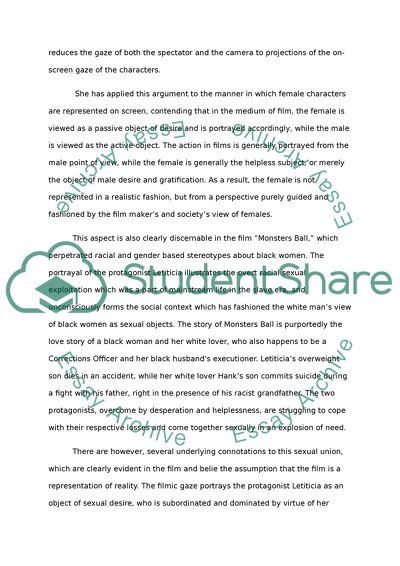Cite this document
(The Cinematic Gaze Case Study Example | Topics and Well Written Essays - 2000 words, n.d.)
The Cinematic Gaze Case Study Example | Topics and Well Written Essays - 2000 words. Retrieved from https://studentshare.org/visual-arts-film-studies/1721186-citing-a-specific-film-example-as-evidence-in-your-close-reading-demonstrate-how-the-cinematic-gaze-is-not-innocent-not-a-window-on-reality-but-in-fact-a
The Cinematic Gaze Case Study Example | Topics and Well Written Essays - 2000 words. Retrieved from https://studentshare.org/visual-arts-film-studies/1721186-citing-a-specific-film-example-as-evidence-in-your-close-reading-demonstrate-how-the-cinematic-gaze-is-not-innocent-not-a-window-on-reality-but-in-fact-a
(The Cinematic Gaze Case Study Example | Topics and Well Written Essays - 2000 Words)
The Cinematic Gaze Case Study Example | Topics and Well Written Essays - 2000 Words. https://studentshare.org/visual-arts-film-studies/1721186-citing-a-specific-film-example-as-evidence-in-your-close-reading-demonstrate-how-the-cinematic-gaze-is-not-innocent-not-a-window-on-reality-but-in-fact-a.
The Cinematic Gaze Case Study Example | Topics and Well Written Essays - 2000 Words. https://studentshare.org/visual-arts-film-studies/1721186-citing-a-specific-film-example-as-evidence-in-your-close-reading-demonstrate-how-the-cinematic-gaze-is-not-innocent-not-a-window-on-reality-but-in-fact-a.
“The Cinematic Gaze Case Study Example | Topics and Well Written Essays - 2000 Words”. https://studentshare.org/visual-arts-film-studies/1721186-citing-a-specific-film-example-as-evidence-in-your-close-reading-demonstrate-how-the-cinematic-gaze-is-not-innocent-not-a-window-on-reality-but-in-fact-a.


